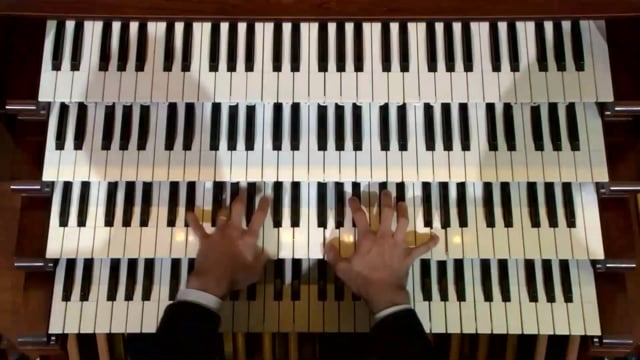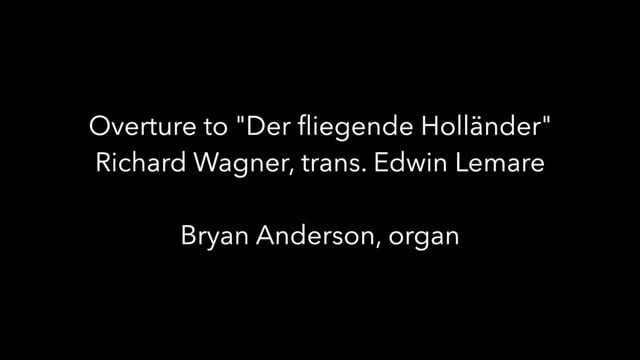Performed on the Aeolian organ at Longwood Gardens, Kennett Square, Pennsylvania: four manuals, 146 ranks, and 10,010 pipes.
Bryan Anderson is the 2023 First Prize Winner of the Longwood Gardens International Organ Competition, where he also received the Philadelphia AGO Chapter Prize for the best performance of a prescribed work by the judges. He also took prizes at the 2021 Canadian International Organ Competition and the 2019 Longwood Gardens International Organ Competition, and is a past first-prize winner of the Albert Schweitzer Organ Competition.
Bryan serves as director of music at St. Thomas’ Episcopal Church and School in Houston, Texas, where he trains all ages of choirs from elementary ages through adults, oversees eight sung services per week, and organizes a concert season of guest artists and in-house ensembles. He serves as co-manager of the RSCM Gulf Coast choral residency program and has also worked as the Preparatory Choir Director for the Houston Children’s’ Chorus.
Bryan Anderson, as part of his Longwood prize, is represented in North America exclusively by Phillip Truckenbrod Concert Artists, LLC. www.concertartists.com
He is a member of The Diapason’s “20 under 30” Class of 2017.
Tambourin, op. 6, no. 3, by Maurice Duruflé, transcribed by Bryan Anderson
There exist only a few non-organ or choral works by Duruflé; the largest in scale, and the only one conceived originally for orchestra without reference to an existing keyboard work, is the Trois Danses pour orchestre. While the entire work was published in 1932, the third movement, “Tambourin,” was written separately, five years earlier. According to Duruflé’s memoirs, referenced by Ronald Ebrecht, it was written to be background music for a “primitive” dance scene in a play by Édouard Dujardin. “Dujardin, whom Mallarmé described as a cross between a coarse seaman and a cow . . . met Duruflé and demonstrated his idea with wild gestures and guttural sounds.” After Duruflé completed the “Tambourin,” “the playwright found it not at all what he wanted and they never saw each other again.” This explains why Duruflé found a different use for the piece in the subsequent years!
Around 1932, Duruflé published not only the orchestral score of the Trois Danses, but a version for piano and a version for four-hands piano. With all three of these accessible, a huge amount of the work required for an organ transcription was already done, with many questions already answered as to how the composer would adapt orchestral writing to the keyboard. The “Tambourin” is unlike any other Duruflé work except the Opus 5 Toccata in its unrelenting energy and speed. Many touches of Stravinskian primitivism are obvious, as befits the work’s origins, but within the inter-war Parisian style; it might be the furthest from chant that he ever got in a composition!







